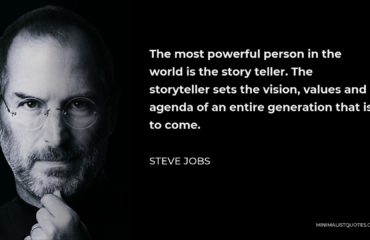
There is this interesting episode that I recently watched the Indian cricket icon Sachin Tendulkar narrate. Tendulkar during the first stages of his career moved from school cricket to Ranji Trophy to playing for India in a matter of about a year. So, in 1989 when he made his debut for India in test cricket against Pakistan, he was only 16 years of age. The Pakistan cricket team had a fearsome pace attack which comprised of all-time greats like Wasim Akram and Waqar Younus.
In this talk Sachin recounts how in the middle of his first innings he struggled to reach to most of the deliveries that were coming his way as it was a totally different game from facing ball deliveries which were coming at him around 75miles per hour that he was used to in school and the Ranji trophy to these menacingly fast paced Pakistani bowlers who were bowling at above 95 miles per hour.
He says when he got out for 15 runs, it undermined his confidence, and he felt totally out of place in the test side and made him question his capability for playing at the international level. He goes onto recount how he was in tears and really didn’t know what to do.
However, we all know that he did manage to figure out what needed to be done and when onto to amass a hundred centuries in international cricket.
If we look at our careers and even our personal lives, there are these changes over periods that come about when we shift from one phase to another. The same strategies and means which made us extremely successful in one phase of our careers and lives will not be sufficient when we move from one phase to the next.
My late father-in-law (God bless his soul) used to watch many series on Animal Planet and was enthusiastic about various hunting methods used to capture different types of animals. Since he had spent a couple of decades in estates very near to forest land, he would also share some of his own stories along with a few drinks which made the entire sequence even more interesting. Salute to his first malt whiskeys and stories!
So, the sequence used by the tribals to capture small animals would follow a pattern like this:
There were groups tasked with different activities.
- The actual hunters armed with the spears etc.
- The leaders who led the team into the forest lighting up the way and checking if there were any dangers along the way.
- The accompanying crowd creating the noise to lure some animals towards the locations where the armed hunters were waiting to catch in on the prey.
The plan used to catch smaller animals like rabbits and boars was to surround a wider area and then drive these unsuspecting animals with the noise and the fire to the places where the hunters were waiting with the weapons.
To put it in short, the key to success of this activity is Enthusiasm.
The sequence that is followed while capturing a big animal like an elephant was very different. The sequences that are usually followed are as below.
- They would track the elephant herd and understand their movements.
- An expert team would build a trench in the best path and camouflage the same so that the same was not observed by the elephants leading to one of the elephants falling into this trench.
- The elephant herd would try to rescue the elephant for a while before giving up.
- The elephant would then be pulled up with the help of other domesticated elephants and taken through a routine to get domesticated.
The key factor for success in this whole operation is Expertise.
During our careers and lives we move from situations like what Sachin had when our profile changes or we are put into a different situation compared to what we have faced and managed till then. In the case of Sachin, he was able to make the adaptation quickly within the same series and succeed the same.
Sometimes when we take time to adapt, we might take a much longer time to get the next similar opening.
I was reading the biography of Saurav Ganguly one of India’s most successful captains, and he also faced a similar situation during his debut in 1991. After missing that opportunity, he had to wait for almost 5 years to get his next opportunity in England which he capitalized with a century.
To add to it mostly these opportunities that come about are ones that we have been longing for a long time and hence there is a lot of self-pressure that is already there on us. There are also at times several aspirants who are also vying for the same opportunity and hence the time given to you to adapt and perform is extremely limited which also adds to the pressure. Very often the skills required in these situations in these new situations are different like we saw that it was enthusiasm while hunting for small animals and expertise while trying to capture elephants.
In today’s fast-paced professional landscape, understanding the distinction between enthusiasm and expertise is crucial.
Early in our careers, enthusiasm is often our greatest asset. It gives us the courage to take risks, the energy to innovate, and the motivation to push through challenges and volunteer to take up opportunities. It is that initial spark that drives us forward. However, as we grow and our ambitions evolve, enthusiasm alone is no longer enough to sustain progress. This is where expertise becomes essential.
Expertise is the result of focused effort, continuous learning, and accumulated experience. It’s not something that can be rushed or substituted with passion. As we advance in our careers, we realize that while enthusiasm can open doors, expertise is what keeps them open. Early on, we may thrive on small wins and quick achievements that fuel our excitement and build confidence. But as our goals become larger and more complex, we need more than energy—we need refined knowledge and wisdom.
Sustainable success is built on the foundation of expertise. Enthusiasm may get us noticed, but expertise earns respect and trust. Making the transition from relying on passion to developing deep, specialized skills is one of the most important shifts in our professional journey. It’s not just about acquiring new abilities but also adopting a strategic, long-term approach to growth and problem-solving. Expertise serves as the compass that guides us through uncertainty and helps us navigate the complexities of higher-level challenges. To understand more about this journey from enthusiasm to expertise do subscribe to my LinkedIn page, Rejo’s Business Bytes, or my website, rejofrancis.com



